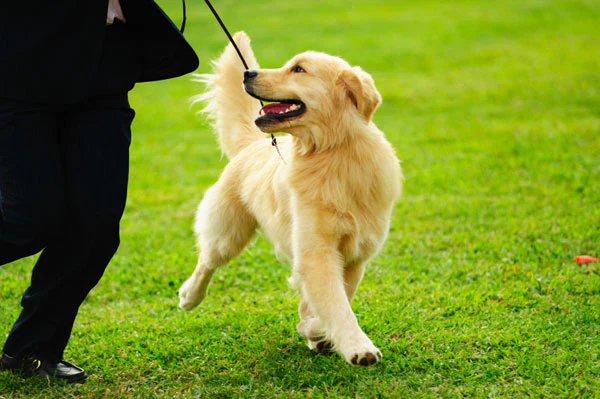Walking your dog is a great way to bond and ensure they get the exercise they need. However, ensuring your dog’s safety and comfort is crucial when using a leash. In this article, we’ll cover essential safety tips for using a dog leash effectively. Whether you’re a new dog owner or a seasoned pro, these tips will help you enjoy a safe and pleasant walking experience with your furry friend.
Choosing the Right Leash
Consider the Material
The first step in ensuring leash safety is selecting the right material. Leashes come in various materials, each with its benefits and drawbacks. Here are some common options:
- Nylon: Durable and affordable, but can cause friction burns if your dog pulls suddenly.
- Leather: Strong and comfortable, though typically more expensive and requires maintenance.
- Chain: Nearly indestructible, but heavy and can be uncomfortable for both the dog and owner.
Length Matters
The length of the leash is also crucial. A standard leash is usually about 6 feet long, which provides a good balance between control and freedom. For training purposes, shorter leashes (4 feet or less) offer better control. Retractable leashes, while popular, can pose safety risks due to their extendable nature and potential for entanglement.
Proper Handling Techniques
Hold the Leash Correctly
How you hold the leash can impact your control and safety. Avoid wrapping the leash around your hand, as this can lead to injury if your dog pulls suddenly. Instead, hold the leash with a firm grip, allowing enough slack for comfort but maintaining control.
Stay Alert and Aware
Pay attention to your surroundings while walking your dog. This includes being aware of other dogs, pedestrians, cyclists, and potential hazards like broken glass or busy roads. Staying alert helps you anticipate and react to situations that could cause harm.
Training Your Dog
Teach Basic Commands
Training your dog to respond to basic commands such as “sit,” “stay,” and “heel” is essential for leash safety. These commands help manage your dog’s behavior and keep them close when necessary. Consistent training reinforces good behavior and makes walks more enjoyable for both of you.
Positive Reinforcement
Using positive reinforcement techniques, like treats and praise, encourages your dog to follow commands and walk nicely on a leash. Rewarding good behavior motivates your dog to repeat it, leading to safer and more pleasant walks.
Preventing Common Leash Issues
Dealing with Pulling
One of the most common issues dog owners face is pulling. If your dog tends to pull on the leash, consider using a front-clip harness or head collar, which can reduce pulling behavior. Additionally, practicing loose-leash walking techniques can help train your dog to walk calmly by your side.
Avoiding Leash Reactivity
Leash reactivity occurs when a dog becomes overly excited or aggressive while on a leash. This can be triggered by other dogs, people, or unfamiliar environments. To manage leash reactivity, maintain a safe distance from triggers and use distractions, such as treats or toys, to redirect your dog’s attention.
Ensuring Your Dog’s Comfort
Check the Fit
Ensure that your dog’s collar or harness fits properly. A collar should be snug but not tight, with enough room to fit two fingers between the collar and your dog’s neck. A well-fitted harness should distribute pressure evenly across your dog’s body, preventing discomfort and potential injury.
Regular Inspections
Regularly inspect your leash, collar, or harness for signs of wear and tear. Frayed or damaged equipment can break unexpectedly, posing a risk to your dog’s safety. Replace any damaged gear promptly to ensure continued safety during walks.
Legal and Community Considerations
Know the Laws
Familiarize yourself with local leash laws and regulations. Many areas have specific rules about leash length and where dogs can be off-leash. Adhering to these laws not only ensures your dog’s safety but also helps maintain a positive relationship with your community.
Respect Others
Not everyone is comfortable around dogs, and some dogs may not get along well with others. Always respect the space of other people and pets while walking your dog. If you encounter another dog, ask the owner if it’s okay for your dogs to greet each other. This helps prevent unwanted incidents and ensures a harmonious walking experience.
Conclusion
Using a dog leash safely involves choosing the right equipment, handling it correctly, and being mindful of your dog’s behavior and surroundings. By following these safety tips, you can enjoy many safe and enjoyable walks with your furry friend. Remember, a well-behaved dog on a leash not only ensures their safety but also enhances the bond you share with them. Happy walking!

